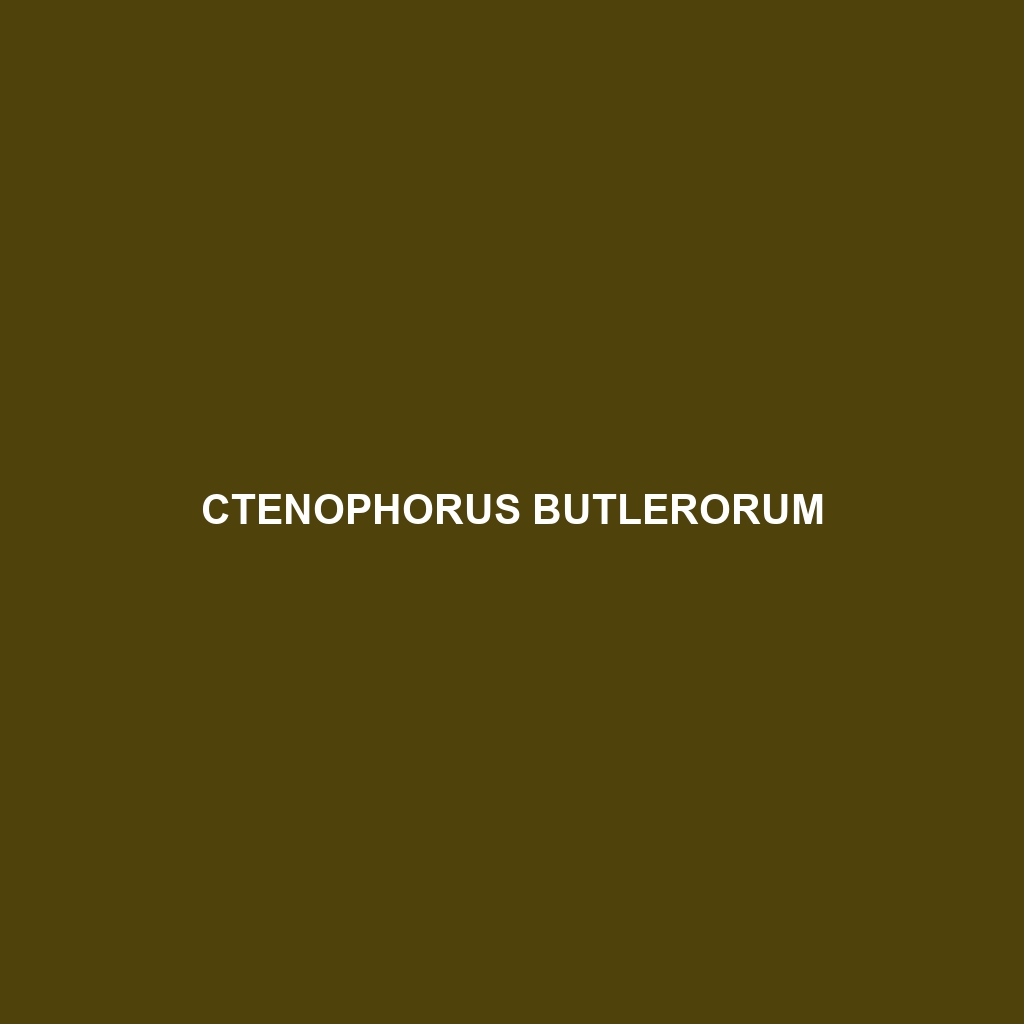Species Description: Ctenophorus butlerorum
Common Name: Ctenophorus butlerorum
Scientific Name: Ctenophorus butlerorum
Habitat: Ctenophorus butlerorum is primarily found in arid and semi-arid regions of southeastern Australia, particularly within the state of New South Wales. This species prefers habitats such as rocky outcrops, grasslands, and sparse woodlands, where it can easily find shelter from predators and access to sunlight for thermoregulation.
Physical Characteristics: The Ctenophorus butlerorum typically reaches a size of about 10 to 15 centimeters in length. Its coloration is a striking blend of sandy browns and creams, with males showcasing vibrant blue patches on their throats and sides during the breeding season. These distinctive colorations serve as visual signals to potential mates and rivals. The streamlined body and long tail aid in agile movements, making it well-adapted to its rocky habitat.
Behavior: Ctenophorus butlerorum is known for its active diurnal behavior, often basking in the sun and engaging in territorial displays. Males frequently perform push-ups or bobbing motions to assert dominance and attract females. This behavior, coupled with their alert nature and quick reflexes, helps them evade predators and interact with their environment. When threatened, they exhibit a retreating behavior, utilizing crevices and burrows for protection.
Diet: The diet of Ctenophorus butlerorum primarily consists of small insects and arthropods, including crickets, ants, and beetles. This feeding habit classifies them as insectivores, and they actively hunt during the day, using their keen eyesight and quick movements to capture prey. Their role in controlling insect populations contributes to the ecological balance within their habitat.
Reproduction: Ctenophorus butlerorum breeds during the warmer months, typically from spring to early summer. Males establish territories and engage in courtship displays to attract females. After mating, females lay a clutch of eggs in sandy or loose soil, usually ranging from 4 to 12 eggs, which hatch after several weeks. Offspring are independent upon hatching and mature within one year.
Conservation Status: Ctenophorus butlerorum is currently listed as ‘Least Concern’ by the IUCN, though its populations can be affected by habitat loss and fragmentation due to urban development and agricultural practices. Ongoing monitoring is essential to ensure its continued survival in the wild.
Interesting Facts: Ctenophorus butlerorum is notable for its unique ability to change colors slightly when excited or threatened, which may play a role in communication signaling. Additionally, it is well-regarded in herpetology circles for its adaptability to varying environmental conditions.
Role in Ecosystem: Ctenophorus butlerorum plays a crucial role in its ecosystem as both a predator and a prey species. By feeding on various insects, this skink helps maintain insect populations, while also serving as a food source for larger predators such as birds and snakes. Its presence contributes to the overall health of the ecosystem, emphasizing the interconnectedness of species within its habitat.
